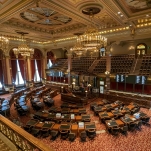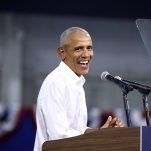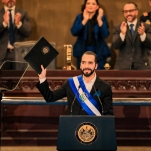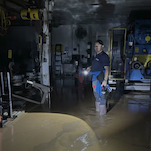James Corden's 'Late Late Show' furniture proves that every American talk show set looks exactly the same
British comedian James Corden made his debut as host of CBS’ Late Late Show on Monday, promising at least one big change to the familiar U.S. late-night talk show format before he even started.
“We’re gonna bring all our guests out at the same time, so all of our guests will sit together for all of the chat segments of the show,” Corden told KPCC last week.
Here’s what interviews on the new Late Late Show look like. Can you tell what’s missing from this picture?
That’s right: a desk, the unsung sidekick of just about every late-night talk show host in American history. During interviews, Corden sits in an office chair to the left of his guests (above, Kevin Hart and Will Ferrell), who all share a couch. This literally puts him on the same level as the celebrities, theoretically allowing for more casual, more intimate conversation. It’s also — at least to me — a little jarring.
Interviewing without a desk, as well as inviting multiple celebrities on stage at once, is an intentional homage to iconic U.K. chat show host Graham Norton. On The Graham Norton Show, there is no desk. Norton sits to the left of his guests, who share a single long couch.
Believe it or not, Corden’s set design is downright subversive. In the U.S., all network talk shows are virtually identical (it doesn’t help that they’re universally helmed by white dudes). The host sits behind a dark wood desk, to the right of his celebrity guest, who sits on an armchair adjacent to a matching but separate couch. It’s uncanny.
For your consideration, The Tonight Show Starring Jimmy Fallon on NBC:
The Tonight Show With Jay Leno (succeeded by Fallon in 2014):
Late Night With Seth Meyers on NBC:
-

-

-

-

-

-

-

-

-

-

-

-

-

-

-

-

-

-

-

-

-

-

-

-

-

-

-

-

-

-

-

-

-

-

-

-

-

-

-

-

-

-

-

-

-

-

-

-

-

-

-

-

-

-

-

-

-

-

-

-

-

-

-

-

-

-

-

-

-

-

-

-

-

-

-

-

-

-

-

-

-

-

-

-

-

-

-

-

-

-

-

-

-

-

-

-

-

-

-

-

-

-

-

-

-

-

-

-









































































































